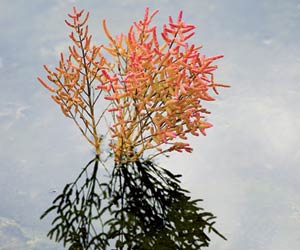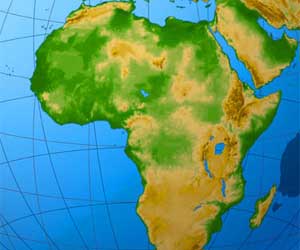
Philippe Body/Hemis/Corbis
in the mid-’80s, an atmospheric physicist named Carl N. Hodges predicted that the key to saving the planet was to make the desert bloom—with a spindly saltwater plant known as salicornia, a.k.a. sea asparagus. The idea languished for years, but now scientists, investors, and even celebrities are lining up behind the 71-year-old’s vision for feeding the planet, fueling our cars, and reversing rising sea levels. “I don’t know if I’m slow or the world is,” says Hodges, the founder of the University of Arizona’s Environmental Research Laboratory, “but finally it has all come together.”
After evaluating more than 700 kinds of salt-tolerant plants, Hodges thinks the lowly coastal succulent (official name: Salicornia bigelovii) is the crop of the future. Sea asparagus can be sautéed (it’s salty and crunches like snap peas), crushed into a protein-rich meal (Hodges has made it into cookies), or pressed into oil (it cooks like safflower oil). Hodges says the most likely market for edible salicornia is animal herders looking for cheap feed supplements, and he thinks the oil could catch on in poor countries. Salicornia can also be turned into biofuel—one that can power cars without hogging freshwater or distorting food prices. nasa scientists estimate that growing saltwater plants like salicornia across an area the size of the Sahara could supply more than 90 percent of the world’s energy needs.
Hodges recently turned 1,000 acres of desert in Sonora, Mexico, into a “seawater farm” that includes fields of salicornia flooded with ocean water to mimic tidal estuaries. He’s also identified about 50 other potential desert sea-farming sites in 34 countries, which he calculates could suck up enough ocean water to counteract the predicted rise in sea levels in 10 years. His work has attracted boosters such as Martin Sheen and the late Marlon Brando, but he’s keeping a lid on how much money his company, Global Seawater, Inc., has raised. Some environmentalists are leery of deluging huge tracts of open land with salt water, but Hodges sees little choice. “It’s hard to do anything that doesn’t have some impact,” he says. “If we don’t do something like this, the area we’re gonna be planting is going to be covered with seawater anyway.”

















